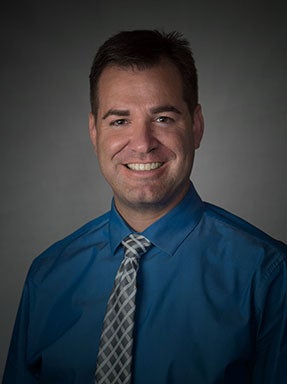What Was Required to Execute the Fall Quarter at DU? A Look Behind the Numbers

The fall 2020 quarter was unlike any start to the academic year the University of Denver has ever experienced. Because of the COVID-19 pandemic, faculty and staff had to pivot, adapt and deploy new techniques and technology just to open campus and keep things running for the full 10 weeks.
A recent study by DU’s COVID Response Team found the University outperformed many of its peers in its response to the pandemic. Last summer, the Office of Institutional Research and Analysis and the COVID Response Team began tracking 95 institutions examining their response to the pandemic. Fifty-five of the 95 institutions went fully online. Of the remaining 40, the team compared the cumulative campus positivity rate, cumulative county COVID cases per 100,000 residents, the testing frequency of the campuses per student body population and the student population size. Only 16 campuses had a lower positivity rate but higher county case load than DU. Of these, several had extremely low testing, which resulted in an inaccurate campus positivity rate, the change to online-only learning in the beginning or middle of their term. Incidentally, many of these schools had a population half the size of DU’s. In total, only eight schools were identified to have performed as well or better than DU, and all those schools, with the exception of one, have medical schools or run a large health care system.

This analysis illustrates the incredible work by so many people who gave countless hours to executing nine out of 10 weeks of in-person instruction and 15,685 in-person class sessions in fall 2020. Achieving this required the University to install a carepod dedicated to COVID-19 testing, working in partnership with National Jewish Hospital to run 29,833 COVID-19 tests for those in the DU community, analyzing sewer samples from six residence halls three times per week, and over 70% of the on-campus community adopting the Everbridge app for contact tracing.
Facilities Management did a lot of the work to make sure areas on campus were prepared for the arrival of students in early September. A whopping 1,750 MERV13 filters were installed in 42 buildings across campus to improve air filtration throughout classrooms and offices. Modifications had to be made to classrooms by removing tables, chairs and whiteboards to accommodate social distancing. Facilities purchased more than 30,000 masks to have available for essential personnel on campus. Upwards of 40,000 new signs and magnets were ordered and installed to inform those on campus of current COVID restrictions and mandatory procedures. To keep classrooms and public spaces as clean as possible, facilities installed 150 hand-sanitizer stations and deployed 3,694 canisters of wipes across campus.
The staff at Sodexo worked to ensure that students living on campus and others in our community had meals. Some 175,579 meals were served to students in Nelson, Nagel and Centennial Halls. Sodexo was also called upon to help those students who had to isolate or quarantine because of COVID-19. They delivered 9,676 meals to students across 15 different properties located both on and off campus. Sodexo’s pilot program with Kiwibot also resulted in 742 meals being delivered from the Einstein’s Bagels on campus.

Because of the pandemic, it was necessary to move courses online, keep many in our community off campus and conduct business in the virtual world. The University’s IT department ensured that our technology was up for challenge. By the time the fall quarter ended, 169,954 Zoom sessions had taken place with 1,207,284 participants. All the sessions accounted for 74,137,172 minutes.
Faculty and staff across campus adjusted courses and programming to fit the needs of the virtual world. In Student Affairs and Inclusive Excellence (SAIE), a total of 626 events for student organizations were held during the fall quarter; only 69 occurred in person. For the events where registration or attendance was tracked, SAIE engaged with a total of 3,424 unique undergraduate students. Among first-year students, 528 attended at least one student-organized event. In Advancement, 13,000 alumni and other community members engaged through DU-sponsored virtual programming. Additionally, 32% of undergraduate and 26% of graduate students engaged with career development during the fall quarter.
The Coors Fitness Center did open for the fall, though it suspended all community memberships to accommodate students, faculty and staff. The facility operated for a total of 919 hours and had 18,836 visits by 1,476 unique students during the quarter.

Communication before and during the fall quarter was essential for keeping the University running and everyone informed. While emails, messages in The Bridge and town hall Zoom meetings have been important avenues for achieving this, DU’s COVID-19 website and dashboard have also been vital during this time. According to ratecoviddashboard.com, the University of Denver’s dashboard receives an A rating. Out of the 349 university dashboards that are rated, DU ranks in the top 10 and is one of 42 universities to receive an A or better.
DU faculty and staff have continued to offer their expertise to local and national media on topics related to the pandemic. During the 10-week fall quarter, faculty and staff appeared in 44 newspaper articles, 21 television interviews and five radio interviews.
To learn more about the University of Denver’s plan for returning to campus for the winter quarter, please click here.











